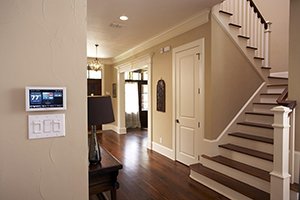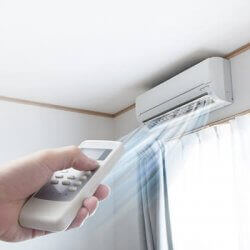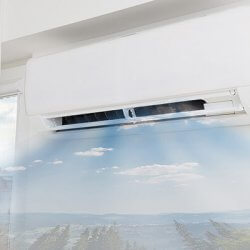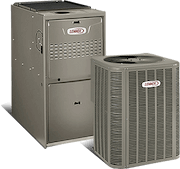
While it is often an overlooked aspect, your thermostat location in your home or business can greatly affect the functionality of your HVAC system. Certain conditions may cause your HVAC system to perform in a way that is contrary to its intended use, making your system work harder than necessary or leaving you with temperature extremes. There are a few vital measures you can take when considering your thermostat location to avoid any potential HVAC mishaps.
4 Thermostat Location Questions to Consider
Is your thermostat located opposite a window?

If you have your thermostat location opposite to or near a window, it may be detecting drafts from outside air rather than the air actually circulating in your home. That means that it may be reading a much colder temperature, resulting in an overheated home, which is both costly and uncomfortable. If your window is located in a particularly sunny area, the solar energy from your thermostat location might confuse the unit. The thermostat may read the energy from the sun and translate it incorrectly as heat in your home, resulting in a much colder environment.
Is your thermostat located next to your HVAC vent?
Your traditional HVAC system delivers warm and cold air out through its vents. If your thermostat location is too close to one of these vents, then it will be much more difficult for your unit to give an appropriate read out. Move the location of your thermostat away from these vents to ensure it is functioning with accuracy.
Is there anything in the way of your thermostat?
Sometimes it is not the location of your thermostat at all but rather the location of objects around it. Often times we don’t realize that objects such as bookshelves, artwork, curtains, furniture, and other miscellaneous decor can impede your thermostat’s ability to read the temperature correctly. Clear the area in front of your thermostat’s location to alleviate any danger of these blockages causing malfunctions.
Is your thermostat located on an outside wall or a wall with poor insulation?
Often times older homes have cracks in the drywall or tend to be poorly insulated in general. If the wall your thermostat is located on is colder than the rest of your home, then it might interpret that temperature difference incorrectly, causing an overheated and expensive situation for your household or business. Be sure to seal any cracks close to your thermostats location and check to make sure your walls are well insulated. It is also recommended that your thermostat be installed on an interior wall of the home to provide a more accurate temperature.
With these four questions in mind, you should be able to tell if your thermostat location is negatively affecting the function of your HVAC system in your home. Don’t be afraid to contact a professional to help change the location of your thermostat. It may greatly improve the comfort of your home.
Contact Galmiche & Sons to Evaluate Your Thermostat Location
At Galmiche & Sons, we pride ourselves on our HVAC expertise. If you still aren’t sure if your thermostat location is affecting your current system, contact our St. Louis heating & air conditioning specialists today to schedule a walk through for your home or business. For over half a century our family owned, family run business has been dedicated to the heating and cooling needs of the greater St. Louis area. Our specialists are here to help. We understand the importance of comfort in your home this winter season. Call us now to schedule your appointment!









